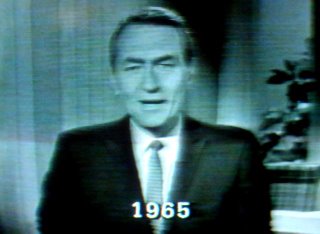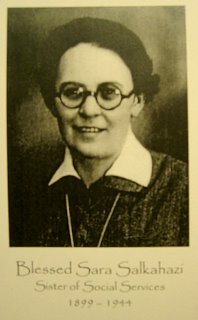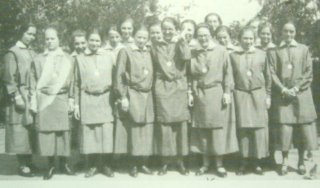
Genio's Restaurant is closing at the end of this month. It was almost 50 years ago that I first walked into its coffee shop -- not knowing that it would be, to me, what Rick's Cafe was to Casablanca.
For me, writing about Genio’s Restaurant right now is like writing about someone you love who is very much alive, but who will die without a bone marrow transplant.
Marvin Cecchini and his grown kids are determined to find a new Burbank location for their business. They’re worried about the demise of a family enterprise that goes back more than 50 years. They believe they owe it to their loyal customers to keep the pasta boiling.
But they’re more concerned that the sale of the building will put their dedicated servers, bartenders, cooks, dishwashers, busboys, hosts and hostesses out of work. Marvin can’t hide the dread he’s feeling.
The people who prepare and serve the food and drinks talk about the “break” or “vacation” they’re about to be taking – it’s obvious, though, that there’s a chance there won’t be a Genio’s and they’ll have to replace “vacation” with “between jobs.”
For every Genio’s employee, there are probably a hundred or more customers who will also be in mourning. It’s a place where people came to share important moments and to meet with essential people. Most of those customers have a Genio’s story. Here’s mine:
I was seven or eight when my mother told me she wanted to take me to lunch at a place in Burbank. It was around 1956 or 1957.
She parked the cream colored 1951 Mercury on the street and we walked past the plate glass windows and entered the coffee shop through the glass door on Olive Ave. It was bright inside.
The long counter ran parallel to the kitchen in what’s now one of the dining rooms. Today, of course, the windows and the glass door are gone and about where the counter was is the solid kitchen wall.
After I ate my grilled cheese sandwich, fries and a Coke, my mother said, “How do you like this place?”
I told her it was great. Yep, I liked it.
“OK,” she said with a smile. “Then I’ll take the job!”
I don’t know why she sought my approval before she hired on as a waitress, but today I realize that working at an established restaurant meant that she would have the independence and security she would need to leave a marriage that was nothing short of hell. I’m sure she saw it as one necessary step toward liberating me and my sister, Nancy, from the terror we were enduring.
Within a year, she divorced our father and the three of us moved from Sun Valley to an upstairs apartment on Cedar Ave. in Burbank.
Mom worked a split shift most of the time and relied on Nancy and me to take care of ourselves when she couldn’t afford a babysitter.
Nancy and I would stay up late sometimes to wait for Mom to come home with a purse full of coins and a bag of garlic bread. We’d help her stack her pennies, nickels, dimes, quarters and half-dollars before we went to bed.
Often times, the garlic bread was my preferred breakfast.
The apartment owner was a kind little man named Pete Antista. He drove a bread truck and delivered the famous sourdough bread to Genio’s. Once he took me with him on his early-morning run. There was only a driver’s seat in his panel truck, so I got to sit on a big loaf of sourdough bread. When we got home, he paid me with a whole, chocolate crème pie.
Mom took her job seriously and was able to neutralize the advances of male customers without discouraging the all-important tips. But one customer wasn’t going to let her excuses for not going out with him get in the way.
Each time she told Ed Ripley that she couldn’t afford a baby sitter, he would make the tip even bigger. When it was obvious the babysitter ploy was no longer working, she played the “I can’t get off work” card.
Rip, as we would all call him, took his case to Genio himself and asked him to give my mother a night off so that they could go out.
Within a year, Genio hosted the wedding reception at his restaurant.
One afternoon Rip threw me a fastball and I caught it wrong and broke my left thumb, up near the wrist. When the doctor got through putting a sizable cast on it, Rip took me to Genio’s to break the news of the break to my mom.
She was carrying plates to a table in the coffee shop when she saw us. Her face broke into a giant smile. Then she noticed the cast and dropped everything on the floor.
At that time, the restaurant’s back door was not far from where the rest rooms are today. I can still remember Genio’s lanky, twenty-something-year-old son, Marvin, helping seat people while he learned the business. His brother, Gene, Jr., was learning how to run the kitchen. Their sister, Paula, was still a child – two years younger than I was.
When I was in high school, I’d drive my 1952 Studebaker to Genio’s for lunch. Being Doris’ kid meant that I would get the royal treatment.
My favorite busboy at the time was Arturo. He was from Mexico and was a little older than I was. He taught me to say, “¿Qué está haciendo? (What are you doing?),” and he’d reply, “¡Trabajando!” (Working!).
Indeed, he was always hard at work. Sometimes, however, he wouldn’t return following the weekend. In the beginning people would worry about him. Soon word would get back to the restaurant that “La Migra” had nabbed him and sent him back to Tijuana. In a few days, he’d find his way back across the line and report back to his trabajo.
I was never more proud of my mother and stepfather when I found out that they were in the process of sponsoring him so that he could get a green card. Arturo went on to become a bartender and would probably be a bartender today if a family crisis hadn’t forced him to move out of state.
 Before I left for Vietnam in 1968 I had to have a sort-of “last meal” at Genio’s. My Army buddy, Paul Mooney, flew in from New York so we could travel together to Okinawa to train the dogs we’d be partnering with in Vietnam. Marvin surprised my by picking up the tab. He told me he’d buy me dinner again when I got home safely.
Before I left for Vietnam in 1968 I had to have a sort-of “last meal” at Genio’s. My Army buddy, Paul Mooney, flew in from New York so we could travel together to Okinawa to train the dogs we’d be partnering with in Vietnam. Marvin surprised my by picking up the tab. He told me he’d buy me dinner again when I got home safely.
I lied to my folks about the date I’d be coming home, so I was able to sneak back into Burbank without them expecting me.
The first place I went was to Genio’s so that I could surprise my mother. It was a busy lunchtime when I came in the door. By that time in her career, Mom was working the cash register and seating people. When I walked in, my Mom wasn’t sight. The other cashier said she was seating some people.
I couldn’t wait. I walked back toward the dining room and saw her waking back from the cove with some menus in her hand.
At first, she saw a guy in an Army uniform who hadn’t read the “Please wait to be seated sign.” She shook her head slightly and then made eye contact. The menus took flight and my mother catapulted herself into my arms. Within a moment or two the customers nearby figured out what was happening and began applauding. Some of them stood up.
That spot in the dining room is sort of a sacred place to me even to this day.
I had dinner there that night and, just as he had promised, Marvin picked up the tab.
A couple of years I was out of the Army and working as a letter carrier for the Burbank Post Office. I’d have my lunch at Genio’s. Arturo would automatically bring me a glass of iced tea with two extra lemon slices and say, , “¿Qué está haciendo?”
“¡Trabajando!”
That was 35 years ago. Today, when I sit down at Genio’s, either the busboy or the server brings me a glass of iced tea with two extra slices of lemon. Arturo trained everyone well and they’ve been passing it on all of these years.
 When I got married the next year, my friends gathered for the reception at Genio’s. When my stepfather died a few years later, we met at Genio’s to remember how the restaurant brought him into our lives.
When I got married the next year, my friends gathered for the reception at Genio’s. When my stepfather died a few years later, we met at Genio’s to remember how the restaurant brought him into our lives.
When my grandmother died back in Iowa the following year, it was the host at Genio’s who broke the news to me.
I had always wanted to be a writer, but it took a while for it to happen. The first time I ever saw my work in print, however, was when I wrote a review of Genio’s for the local paper. The paper’s restaurant writer got the byline, but I was proud knowing that it was actually my work.
When my first wife and I got divorced, somehow she seemed to have gotten custody of my mother. They remained good friends and I’d often run into my ex there at Genio’s. In 1983 I bought a little house across the street from Genio’s and down a bit. Genio’s brother-in-law, Tony, had retired as the bartender and was living three doors down from me on the corner.

 Tony painted many of the beautiful landscapes that still adorn the walls of Genio’s. If my mother would see me admiring one of them, she’d buy it from Tony and wrap it up as a Christmas gift. I treasure two of his paintings that are on my wall today.
Tony painted many of the beautiful landscapes that still adorn the walls of Genio’s. If my mother would see me admiring one of them, she’d buy it from Tony and wrap it up as a Christmas gift. I treasure two of his paintings that are on my wall today.
Tony had little to live for after his sister, Joan, died and later, her husband, the founder of Genio’s. They still refer to the little bar in the banquet room as Tony’s Bar.
My mother met her third and final husband, George Quinn, there at Genio’s. They were married for only a couple of years when he died.
Before she retired, Mom went along with Marvin’s suggestion that she join other professional Burbank women as a member of the Zonta International service organization. She volunteered her time delivering Meals on Wheels and helping community members in other ways. She eventually became president of the club and presided over meetings in the Genio’s banquet room. The highlight was when she traveled to Australia for Zonta’s international conference. Indeed, it was her involvement with Genio’s that helped that skinny, inexperienced waitress discover her strengths and do her part to help the world.
When Mother passed away in 1997, Marvin Cecchini stood up at her memorial and told stories we’d never heard before about a woman it seemed everybody loved.
Then he invited everyone to the restaurant to celebrate her life and her spirit.
I can’t go in there without thinking about the zany things she’d do on evenings when none of the owners were around. They were innocent things, such as pedaling through the restaurant on a busboy’s bicycle or joining the cooks, dishwashers and busboys when they’d declare the kitchen a Mexican restaurant and put on a secret Taco Fest.
It’s going to be devastating when they close the doors for the last time and I won’t be able to surround myself with the people, the pictures, the sounds and the smells that have brought me so much pleasure for most of my life.
 I’ll miss the always-welcome smiles from the people there who treat me as if I’m special.
I’ll miss the always-welcome smiles from the people there who treat me as if I’m special.
I’m not special, but they treat me that way because I’m “Doris’ kid.”
If you’ve never eaten at Genio’s, you should do it once, just to say you’ve been there and to know what Burbank is losing. If you ever dined there, you must return on last time.
Order the garlic bread and ask for them to make it extra crisp – almost burnt – and ask them to make it drip with garlic butter. Forget the cholesterol this one time and immerse yourself in Italian bliss.
And, despite what your server says about his or her impending “vacation”, leave a few extra bucks this time around.
You never know if your waiter or waitress is counting on taking home an order of garlic bread to feed the kids.
And if you get to chatting and they ask you how you know so much about the place, tell them you heard it from Doris’ kid. It might earn you a couple of extra lemon slices.

 You might say that I had an hour to kill this morning between my East Los Angeles appointment and my downtown L.A. meeting.
You might say that I had an hour to kill this morning between my East Los Angeles appointment and my downtown L.A. meeting. Ralph Story had an amazing ability to see things others couldn't see and to see things in ordinary people that others missed. He was a great writer, but I'd later learn that he had great writers working with him.
Ralph Story had an amazing ability to see things others couldn't see and to see things in ordinary people that others missed. He was a great writer, but I'd later learn that he had great writers working with him.













